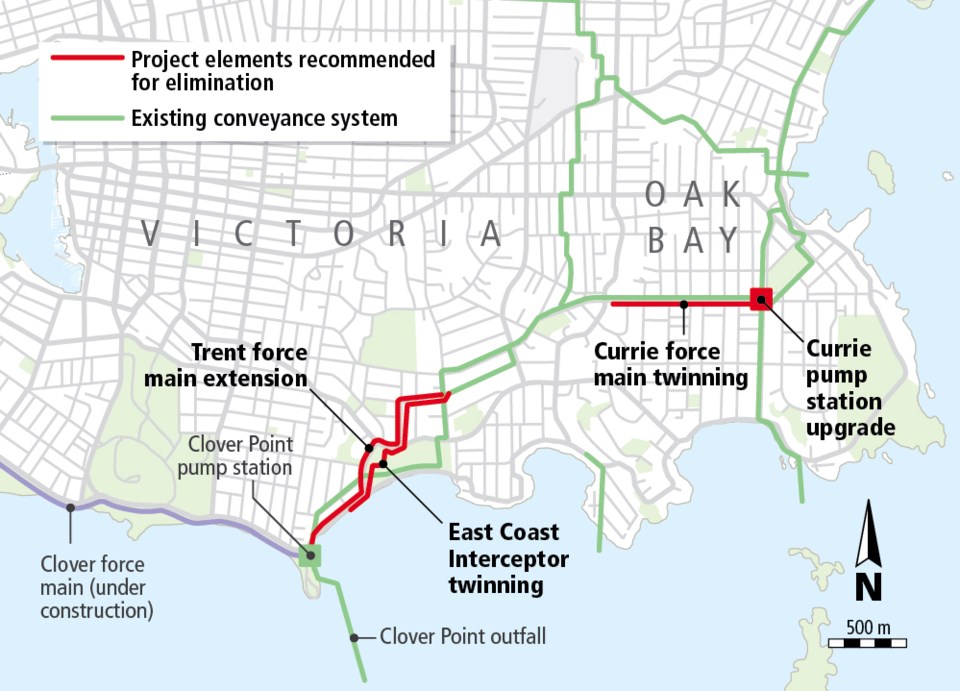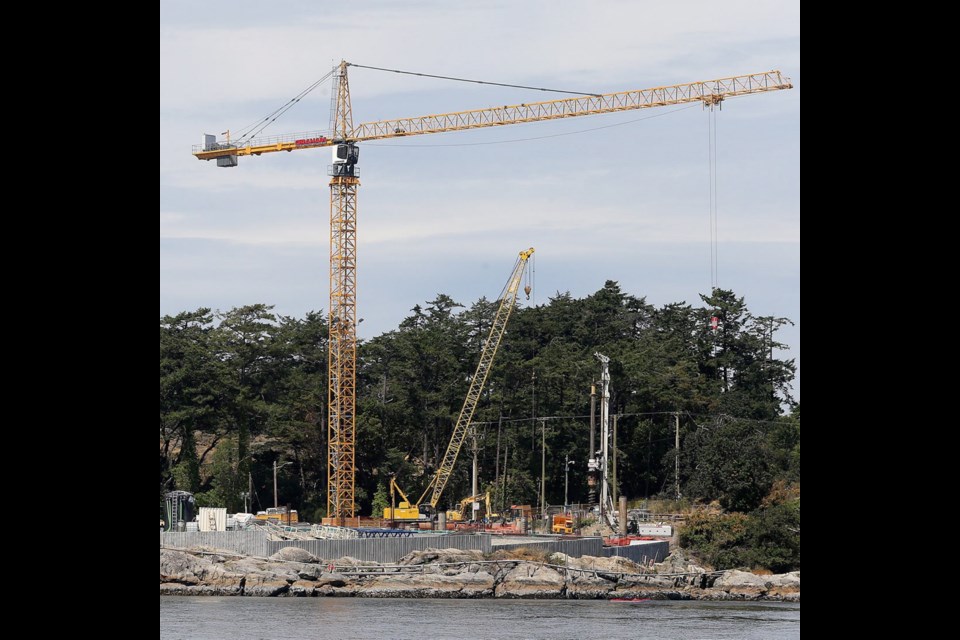Local taxpayers will have to come up with another $10 million to complete the Capital Regional District’s sewage-treatment project, which is running about $30 million over its $765-million budget, if it’s built as planned.
Project officials say an over-heated construction market has pushed up costs.
In two reports going to the independent project management board on Friday, project director Dave Clancy and deputy director Elizabeth Scott suggest not undertaking upgrades to three sections of the system — at a cost saving of $20 million — and ask the CRD board for a budget increase of $10 million.
“We’ve seen escalation on all of the conveyance contracts,” Scott said, referring to the pumps and pipes that will carry wastewater and residual solids to treatment facilities.
“We have had competition on all of them. It’s just there is a lot of construction going on. It’s not only on the Island — it’s within B.C., generally — but it is amplified on the Island.”
The project board has already dug into a $69-million contingency to cover costs of seven conveyance contracts that have exceeded the budget by $56 million.
The report notes there has been a “significant increase” in the cost of labour and materials, including polyethylene piping, steel and aluminum.
“We have been drawing from that contingency for these contract awards and based on where we’re at in the project and the fact that we’ve drawn more than what we would like in order to award these contracts, we said: ‘OK, what is our forecast to complete the project?’ ” Scott said.
The staff report recommends asking the CRD board to approve a budget increase of about $10 million, pushing the total project cost to $775 million, up 1.3 per cent from the original $765-million budget.
If the project were constructed as planned, the total cost would be $795 million, about 3.9 per cent over budget.
Because federal and provincial contributions are capped, local taxpayers will have to cover the increase.
Barb Desjardins, chairwoman of the CRD sewage committee, said she is “definitely disappointed” to hear of the higher cost.
“But we have heard from just about everyone in the development or project sector that costs for both labour and materials have gone up significantly. So this is not unusual,” she said.
“What we need to do is to request whether there are other funds out there that we might look into, other grants, what ways can we fund this with minimal pain.”
To save the $20 million, three of the four remaining conveyance contracts would be eliminated.

The project team says work to extend 1.3 kilometres of a pipe known as the Trent forcemain in Fairfield should be completed. However, upgrades to the Currie Pump Station and twinning of a forcemain and a gravity sewer could be cut, they say.
The projects, identified in 2003, were designed to take excess wet weather flows to Clover Point, where they could be discharged out of the long outfall, rather than through a number of shorter overflows in Oak Bay.
But reduced water consumption due to the replacement of old water fixtures and appliances, a change in public habits and building codes over the past 15 years means the upgrades are no longer necessary, Scott said.
“They’re not needed today and they’re not needed in the foreseeable future.”



